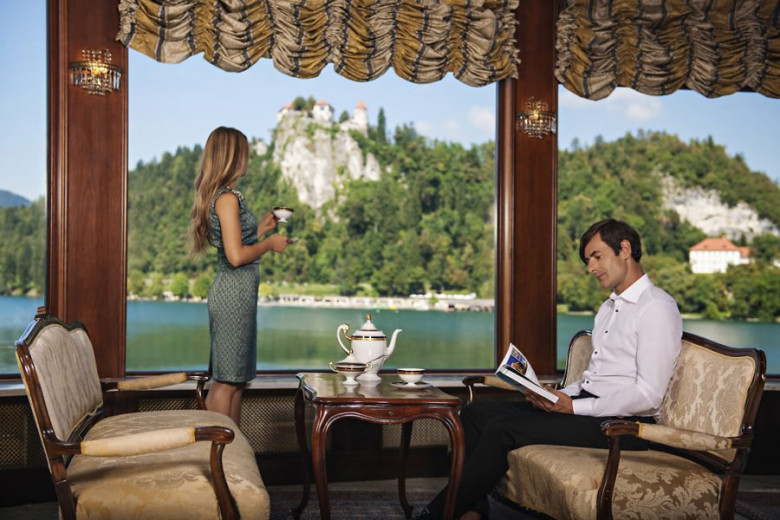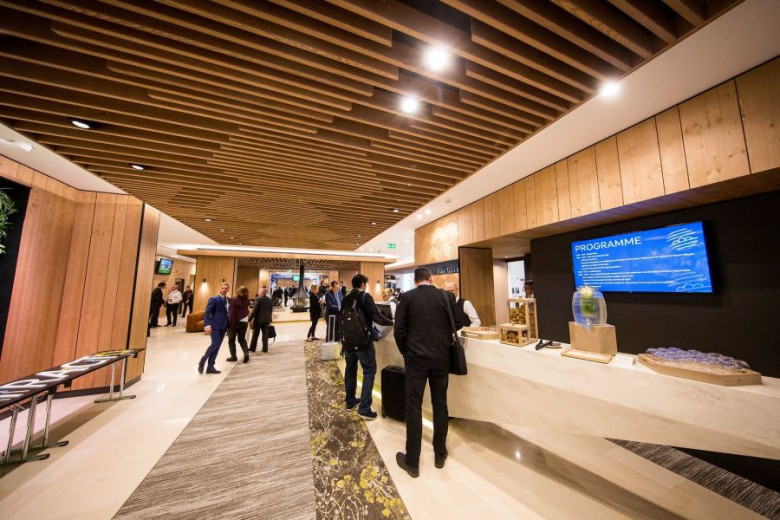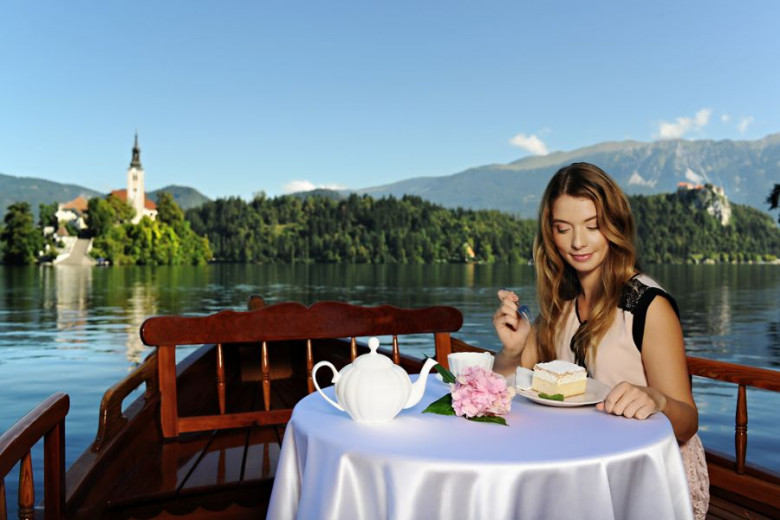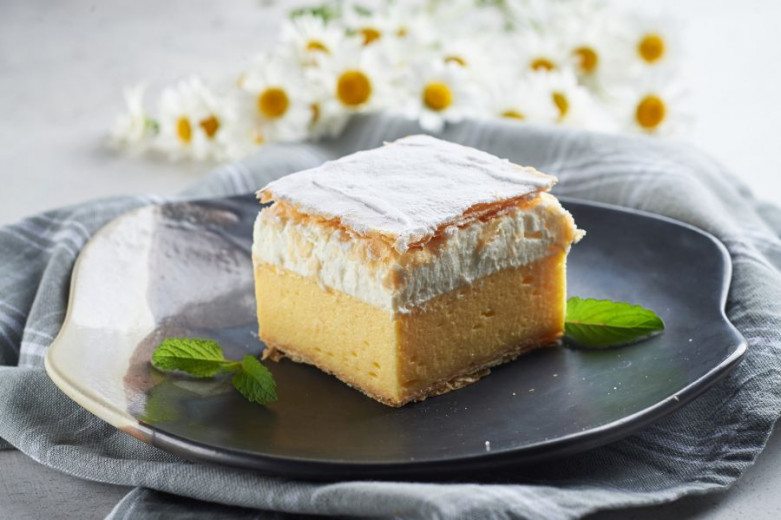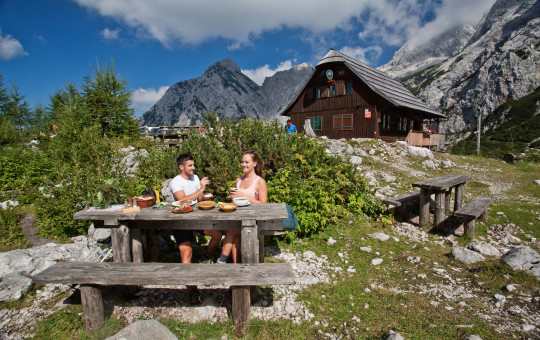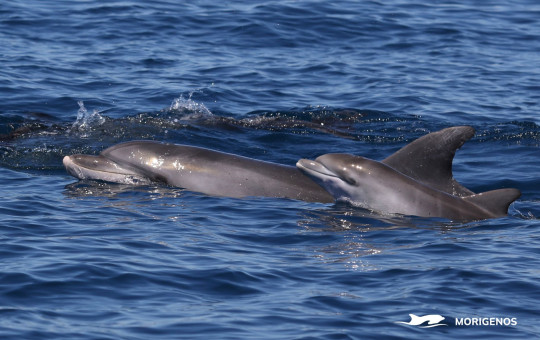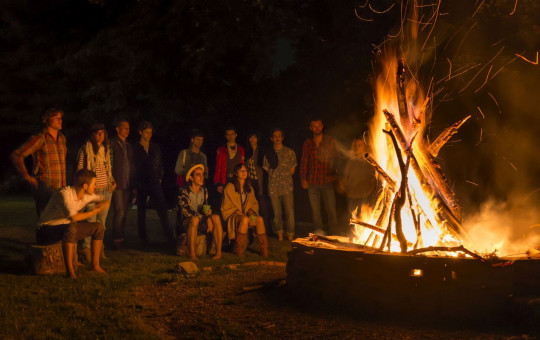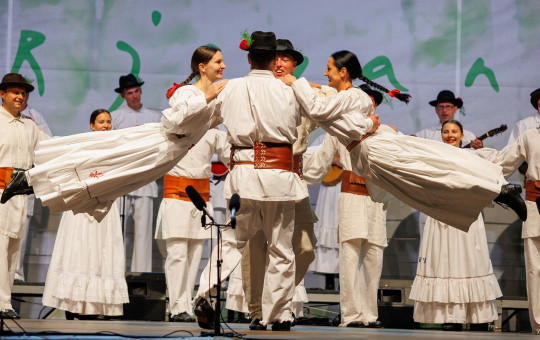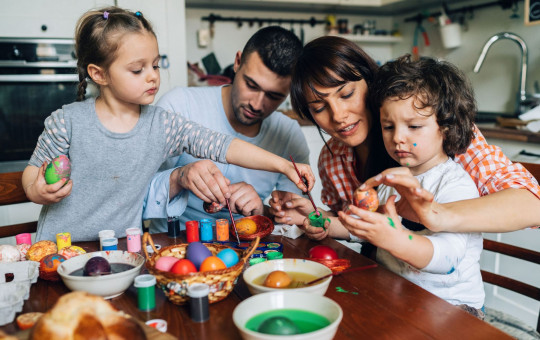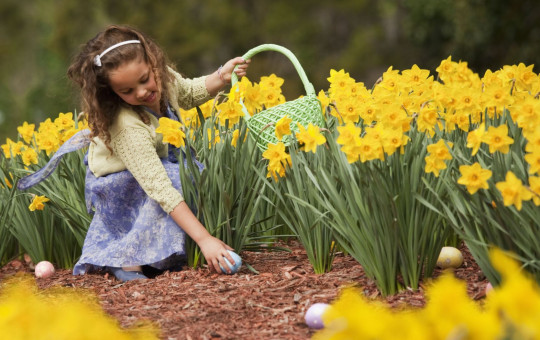Dark blue on the top, light grey, sometimes even white as snow in the middle, and different shades of green below. A mirror glitters at the bottom. Dark blue sky before the storm. White as snow, light grey limestone covers the mountain ranges. Forest of different shades of green. As the seasons change, so do its colours.
Lake Bled lies at the centre of the Bled Corner. A tectonic hole made later by the Bohinj glacier was once at the location of the present lake. The glacier ran into an obstacle, a huge rock against which it rubbed and scraped for so long that the only thing that remained was the present island. The ice melted and the basin was flooded with water, which led to the appearance of the 2.12 km long and up to 1.30 km wide Lake Bled. It is up to 30.6 m deep, which makes it attractive for divers to explore. But the story of the island is probably more magical… Pastures used to be located on this spot, in the middle of which stood a small church consecrated to the Virgin Mary. Since there was no fence around the church, cattle used to come right up to it and even go inside, desecrating its interior. One day, a voice of caution was heard from heaven, “Build a fence around the church. If you don’t, I will.” As the people of Bled remained indifferent, they woke up one day and saw the church on the hill surrounded by water. And this is how Lake Bled emerged.
-
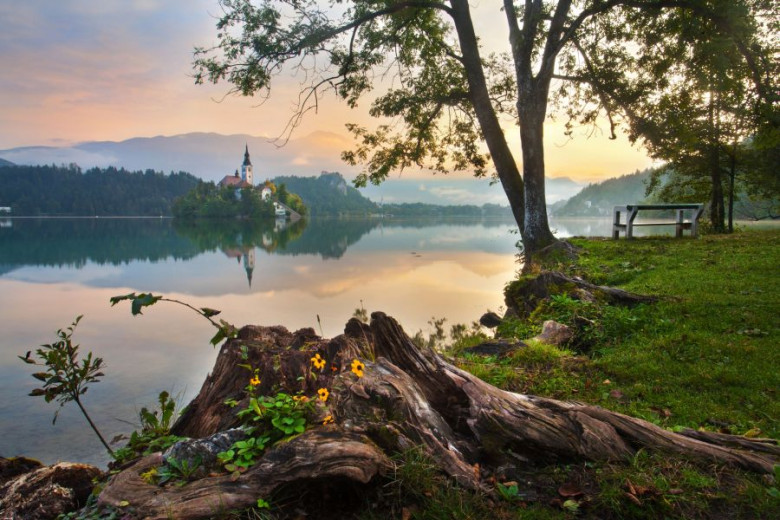
Bled lake in the early evening. Photo: Jošt Gantar/www.slovenia.info
-
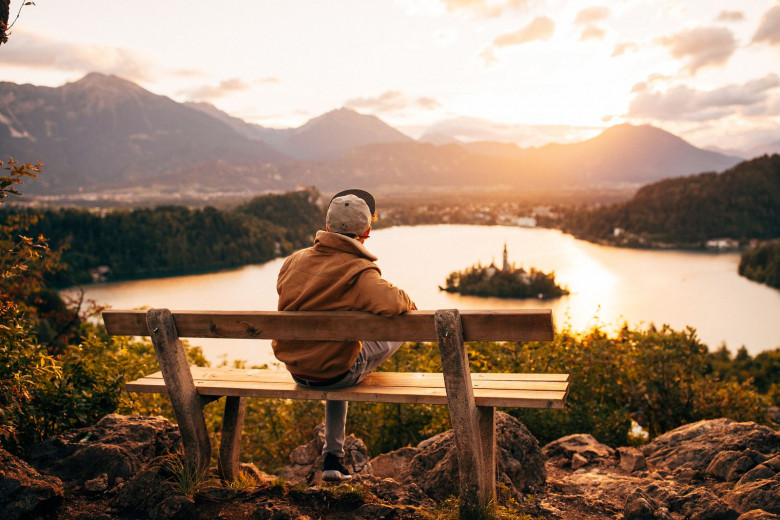
In the autumn. Photo: Jacob Ricglin/www.slovenia.info
-
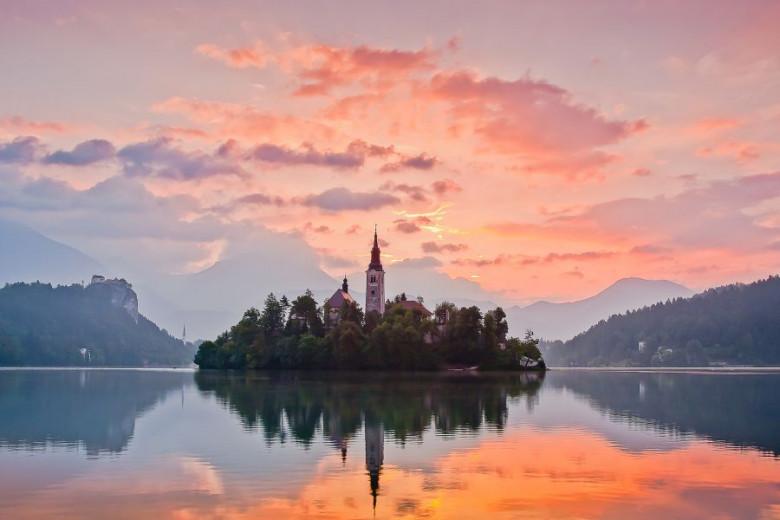
Before the sun rise. Photo: Franci Ferjan/www.slovenia.info
-
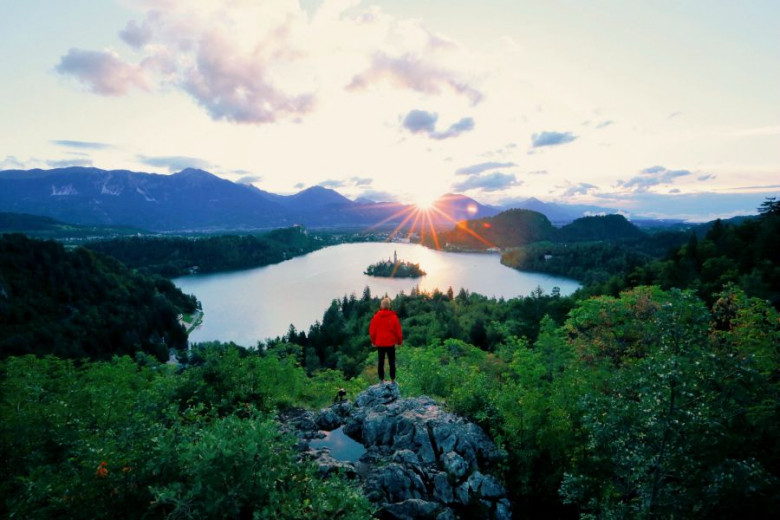
Lake in the spring. Photo: James Relf Dyer/www.slovenia.info
-
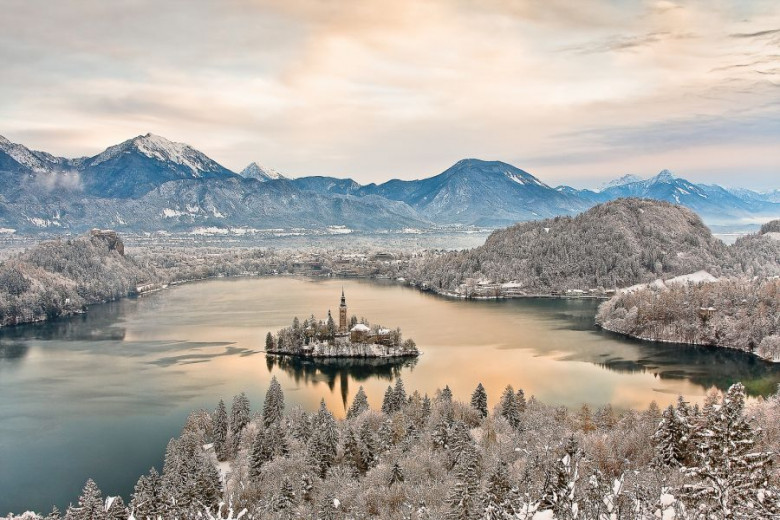
Bled lake in the winter. Photo: Franci Ferjan/www.slovenia.info
The oldest castle in Slovenia
A mysterious castle was once located on a high hill above the Great Stone in the Radovna Valley. What you are about to read happened to an old man who ventured unsuspecting from Radovna to Mass in Gorje along a lonely path by the river.
“Suddenly, something frightened him near the Great Stone. Something rustled horribly in the bushes right next to the old castle. He quickly hid behind a tree to wait and see what was hiding in the bushes. He did not have to wait long. He caught sight of a large fat snake slithering down over the stones and rocks into the valley. It crawled into the water, screaming loudly.”
This story is from a tale about an accursed woman who used to live in this accursed castle, and the tall hill above the big stone is still called Gradišče (fort).
On 10 April 1004, the German king Henry II granted the Bled estate to Albuin, Bishop of Brixen and his bishopric. In 1011, Henry II granted the castle atop the cliff (Castellum Veldes) to Albiun’s successor, Adalberon, with a new deed of gift, which is the earliest known record of the castle. Bled castle was the administrative centre of the Brixen estate in Upper Carniola. Medieval sources mention Bled in the German form of Veldes. On the basis of the documentation, the castle is the oldest castle in Slovenia.
-
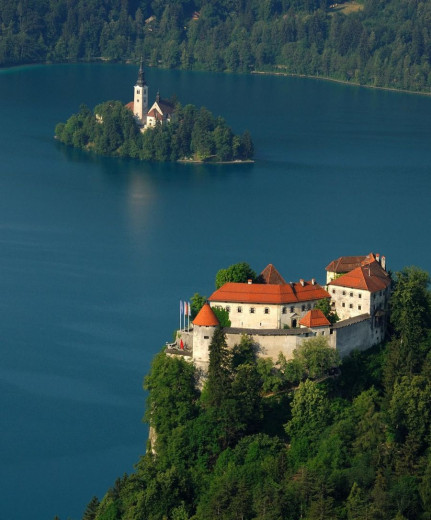
Bled castle and the island. Photo: M. Lenarčič/www.slovenia.info
-
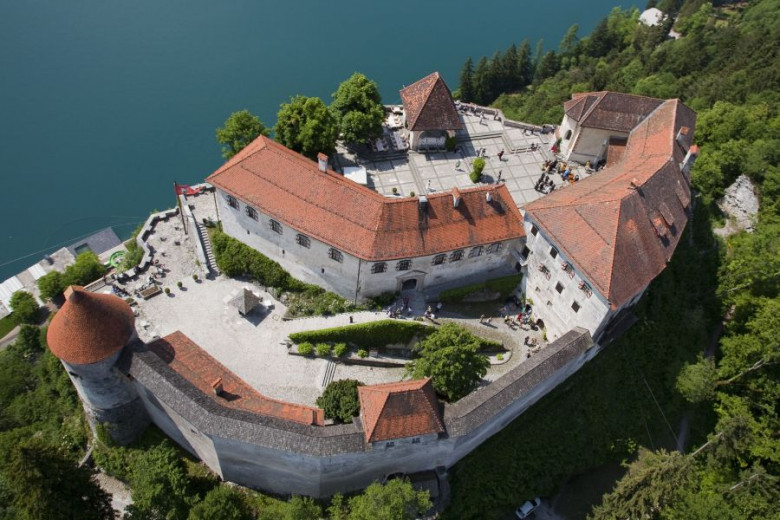
The castle's history dates back to 1004 when the German king Henry II conferred the estate of Bled on Bishop Albuin of Brixen. Photo: C Studio/www.slovenia.info
-
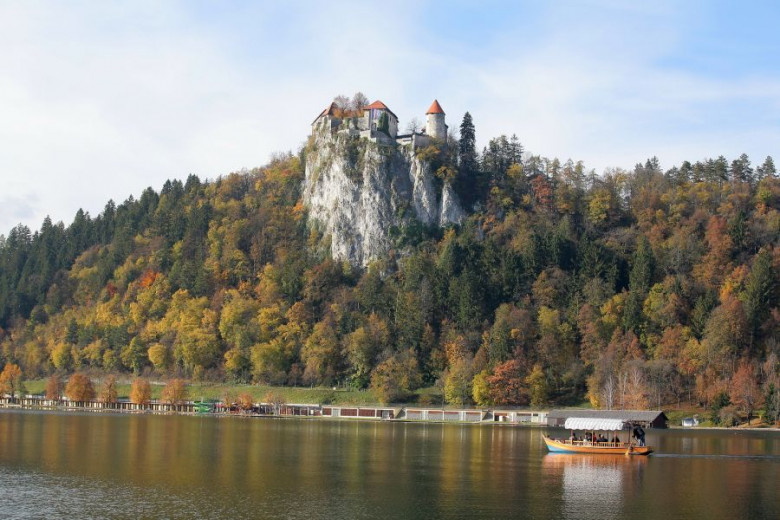
Bled castle in the autumn. Photo:Mirko Kunšič/www.slovenia.info
-
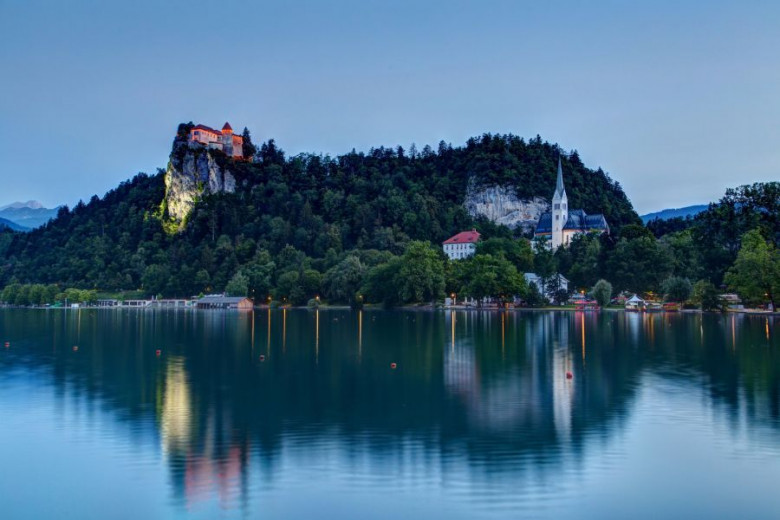
Bled castle in the evening. Photo: Coppo di Marco/www.slovenia.info
The wishing bell
It is still true that, once in the Church of the Assumption of Mary on Bled Island, one should ring the bell and make a wish. The wishing bell comes from a story about a young widow who had a bell cast in memory of her husband. As it was being ferried to the island, a storm surprised the workers and they drowned, together with the bell. The young woman was so unhappy that she devoted all her assets to the construction of a new Church of St. Mary on the island, although she left Bled castle and entered a convent in Rome.
When the Pope heard the sad story about the unfortunate young widow, he consecrated a new bell and had it transported to the Church of St. Mary on the island where, as the wishing bell, it still conveys many sincere heartfelt wishes.
On some clear and serene nights, you can still hear the sad tolling of the sunken bell from the dark depths of the lake.
-
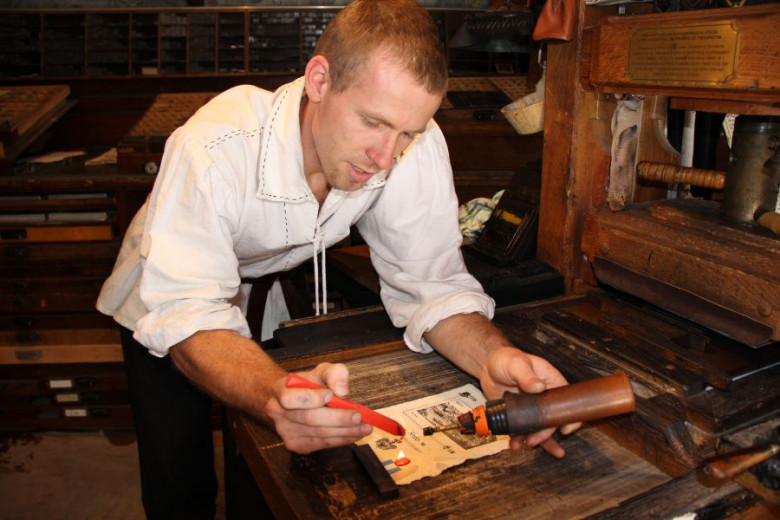
Demonstration of printing on a reconstructed Gutenberg's printing machine and prints of certificates. Photo: UKOM archives
-
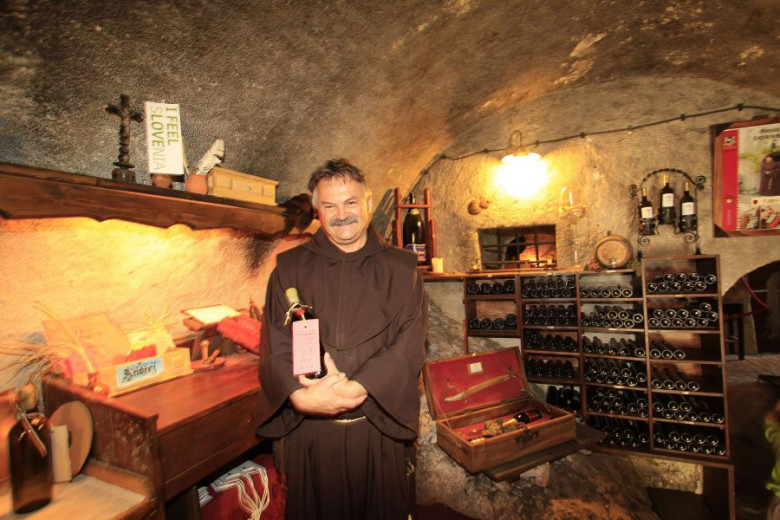
The castle wine cellar attracts with tastings of its top-quality wines and a demonstration of bottling of wine from oak barrels. Photo: UKOM archives
-
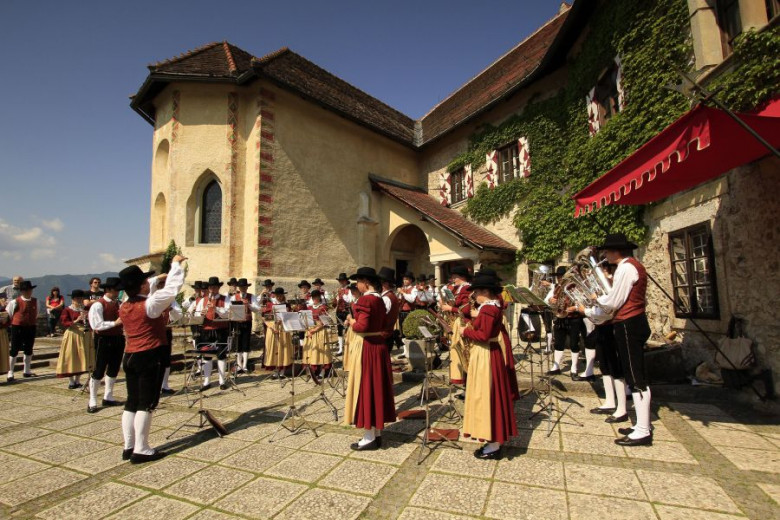
Musical event at the castle. Photo: UKOM archives
The castle facilities are arranged along the lower and upper courtyards. The bishops of Brixen did not live in Bled and very rarely visited. The estate was managed by ministers, caretakers and the people of Gradišče, in accordance with the castle’s feudal law. The bishops later leased the estate. The first tenant was Konradt von Kreigh, and the Kreigh family remained tenants for almost two hundred years. They were followed by their relatives, the Turns, and then Herbard von Auersperg, a hero of battles with the Turks. He attempted to buy the building for his family and began reconstructing it after the 1511 earthquake.
While he was a tenant, the castle was a strong base of Protestantism. Primož Trubar stopped here in 1561. Later, Ivan Josip Lenkovič and Count Žiga Turn became tenants. After the tenancy period, the bishops appointed governors, all of whom until the 18th century were noblemen, while later they were commoners. Some lived in Bled, while others managed the estate through caretakers. Due to the changes in its managers, the castle had little valuable equipment of historical value.
The Bled estate was nationalised in 1803. When Napoleon occupied Carniola, the estate came under the ownership of the Illyrian Provinces. The property was returned to the Brixen diocese in 1838. After the feudal system was abolished in 1848, the Brixen owners could no longer afford the rising costs of upkeep, and so the property in Bled was sold in 1858 to the entrepreneur and owner of the Jesenice ironworks Viktor Ruard. Ruard sold the castle and estate to wholesale merchant Adolf Muhr in 1882.
The restless history of the castle continued, and the castle, lake and island were bought by Ivan Kenda, a hotel manager from Bled, in 1918. He had great plans and wanted to convert the castle into a hotel. He over invested and his entire property was confiscated in 1937 by the Cooperative Business Bank, and later taken over by the Drava Banate. A fire broke out in the castle on 18 August 1947 which destroyed a significant part of the roof. The history of Bled castle is diverse and tumultuous.
Organised professional reconstruction began in 1952 according to the plans of architect Tone Bitenc, who was a student of the famous Slovenian architect Jože Plečnik. The reconstruction took ten years and was completed in 1961. During the reconstruction, Bled castle gained a somewhat more modern appearance adjusted to tourist tours. The Bled Culture Institute renovated the museum section in 2008.
-
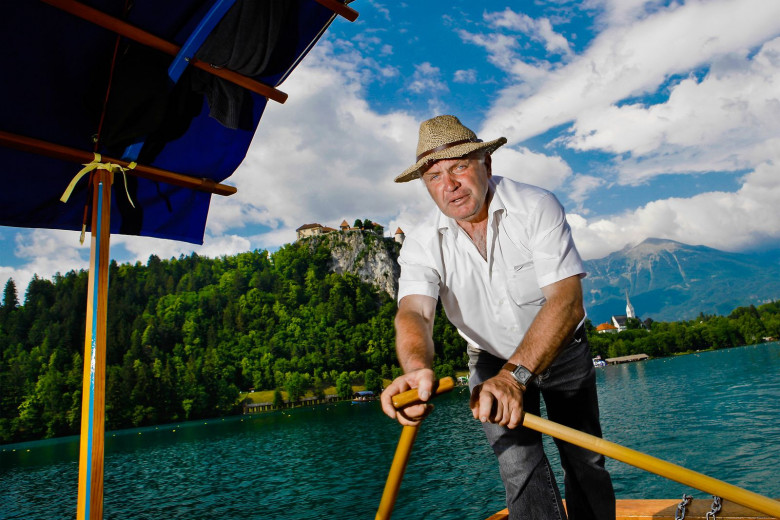
The boat is navigated by "pletnar", which is quite an esteemed vocation that cannot be done by anyone. During the reign of Maria Theresa the ownership rights for pletna boats were given to farmers who received poorer land for cultivation. Photo:Tadej Bernik/www.slovenia.info
-
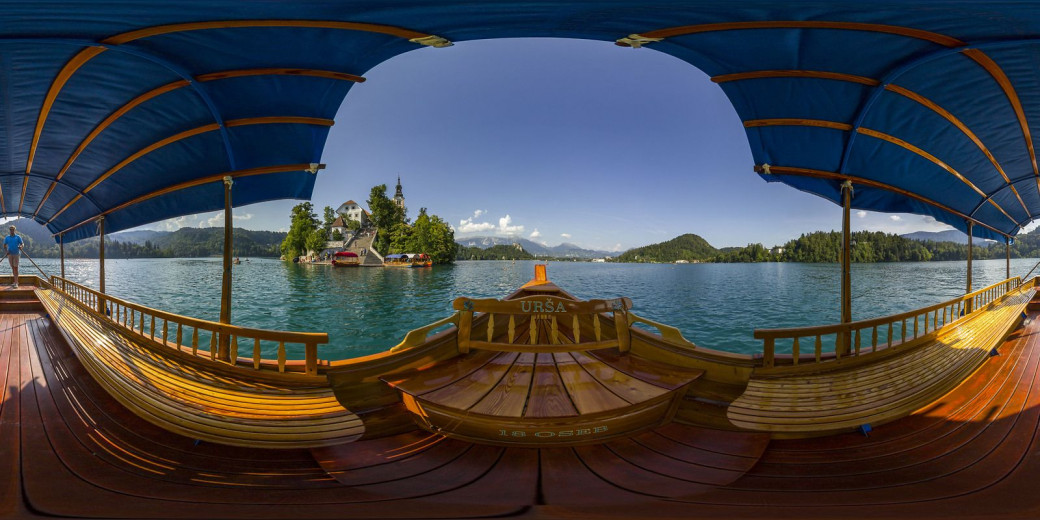
You can ride on the lake and to the island in various ways, also on a traditional boat called pletna. Pletna boats are made by locals and are typical of Bled. Their origins date back to 1590.Photo:Žiga Ivanc/www.slovenia.info
Arnold Rikli – the sun doctor
According to Dr Arnold Rikli’s philosophy, the nervous system is the highest autonomic principle in our bodies, and sunlight is the finest and most dynamic (invigorating) food for the ner¬vous system. Life is the movement of substances, and power is the ability of substances to move. In addition to sunbathing and air baths, Rikli prescribed various baths, vegetarian food and sleep in the open air. Rikli used his unique healing meth¬ods to set up a unique health spa offer. To apply his healing system, Rikli built 56 air huts, a swimming area, an administrative building with a dining hall and a villa in Bled. He was the first to describe the network of paths around Bled and its surroundings in 1862.
Bled is still a place for relaxation, sport and all sort of the activities.
-
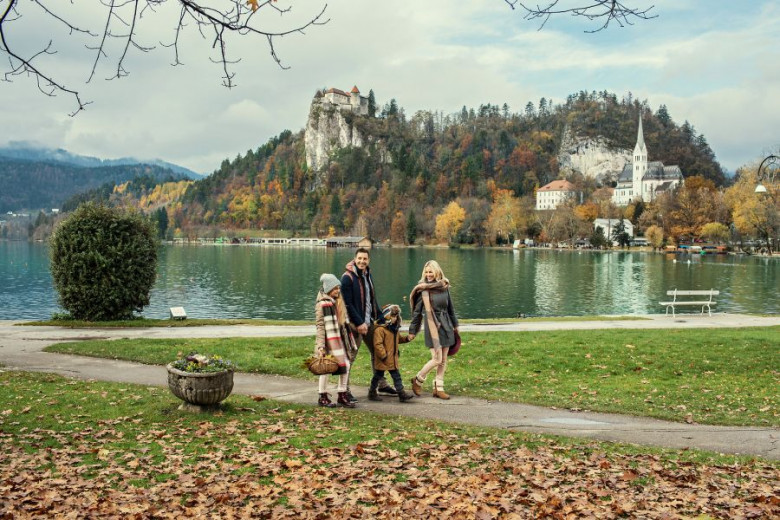
Bled is ideal for families and a walking around the lake. Photo: Dean Dubokovič/www.slovenia.info
-
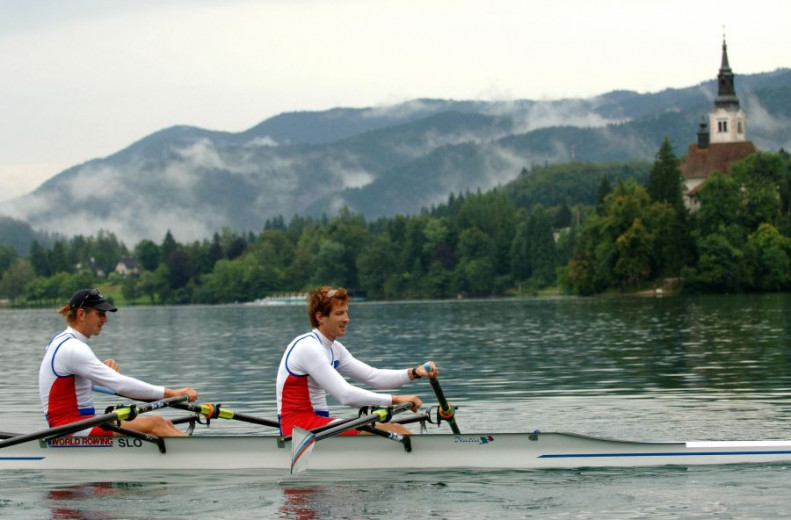
There's very famous Rowing Club Bled. Photo: Domen Grögl/www.slovenia.info
-
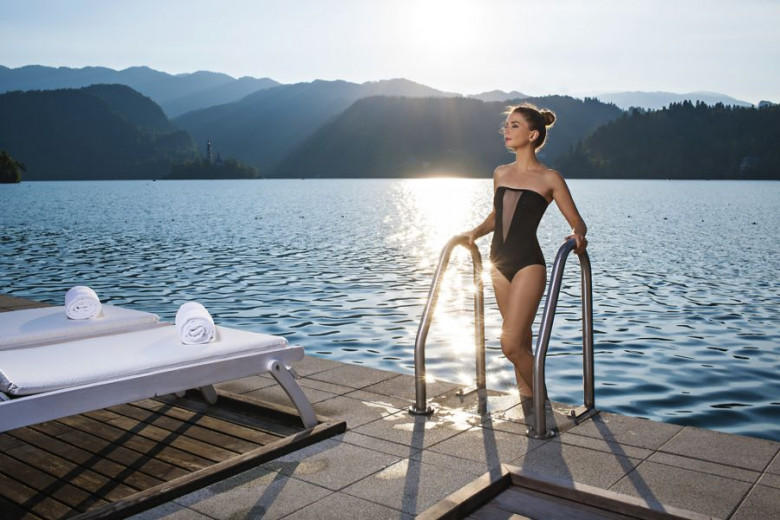
Its ideal for swimming. Photo:Dean Dubokovič/www.slovenia.info
-
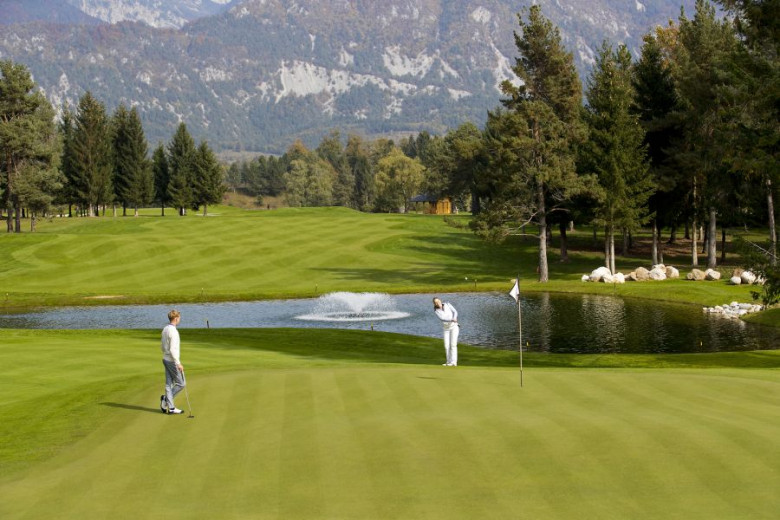
The Royal Bled Golf Club. Photo: Aleš Fevžar/www.slovenia.info
-
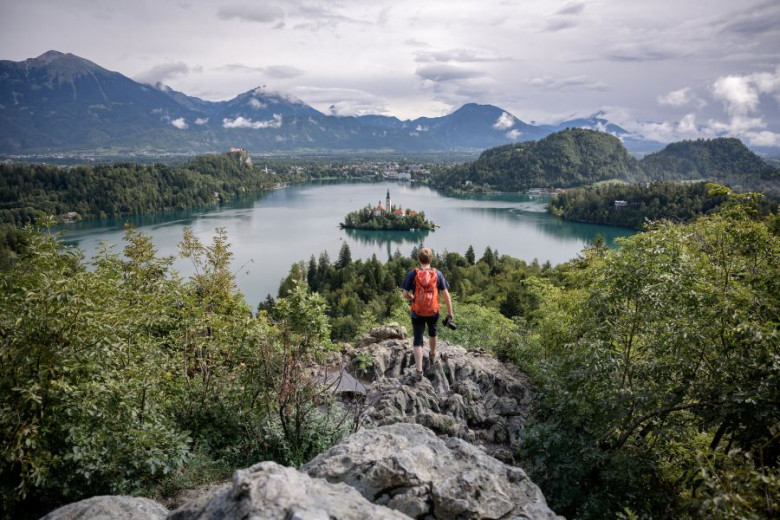
A magical landscape. Photo:James Relf Dyer/www.slovenia.info
Bled – the green arena of global diplomacy
Bled became a meeting place of diplomats and politicians as early as in the 19th century. Organised diplomatic activity began in Yugoslavia, when King Alexander Karađorđević declared Bled his summer residence. The most important foreign policy events include three meetings of the Little Entente (1926, 1935, 1938) and one meeting of the Balkan League (1935). Bled maintained its important political and diplomatic role even during World War II, becoming the centre of the German occupation authority in Upper Carniola. After World War II, the decision of the former Yugoslav President Josip Broz–Tito to build a residence in Bled strengthened the official role of the place. It was at that time, especially in the 1960s, when Yugoslavia began to open up to the world, that Bled saw the peak of diplomatic tourism. The Tito–Dimitrov treaty on the Yugoslav–Bulgarian federation (1947) and the Balkan Pact (1954) were signed here.
Bled folk tales
One tale relates the story of a mountain guide from Bled called Bavant. One day, he met a fearsome Turk in battle. They swore, spat over their shoulders, loaded their guns, aimed and boom! But what do you know; when the smoke dispersed, they were both still standing. The people of Bled still believe that their bullets collided.
In the days before refrigeration, ice-making offered an opportunity to make some cash in the winter, and was also a kind of tradition in Bled. The following story was well-known. In order to cut the ice, workers removed one handle of a mitre saw, made a hole in the ice with an axe, and sawed. As they were working, a man from Ljubljana came by. The man watched and then started shouting for the workers to change places or else the one in the water would drown. He thought that another person was working the other end of the saw underwater.In the years before World War II, the Karađorđević royal family decided to buy some horses in Norway, so called Fjord horses. Stables were arranged in Proštija, opposite the entrance to Villa Bled. At the end of the war, one of the regally bred Fjord horses was taken to the partisans, which did not please it very much. He even bit the partisans on more than one occasion. The horse was destined to be cooked in a cauldron somewhere in Jelovica.
The history of the Rikli period is diverse. Who knows if climbers from Bled know that Rikli’s patients were the first climbers from Bled to master descent using a rope?
There was not enough room in the open huts by the lake for all the patients, so they also stayed in hotels. At night, they would descend to the ground by using sheets tied together. Coachmen waited for them around the corner and took them to good inns. The hardworking Mr Rikli, however, was convinced that only he could take credit for the good appearance of his patients. The people of Bled used to go ice-skating (modern ice-skates with metal blades) on the lake. Ice-skaters, particularly women, dressed up to go skating. It was such a joy to watch them. More prominent houses used upholstered armchairs with blades (ice-skates) attached to the front to drive on the ice. People were hired to drive prominent ladies around on the ice like this. One of these armchairs was also owned by the parish. It was beautifully made and upholstered in cardinal red plush. On St. Blaise’s day, the altar boys used this armchair to push the priest to the island.
-
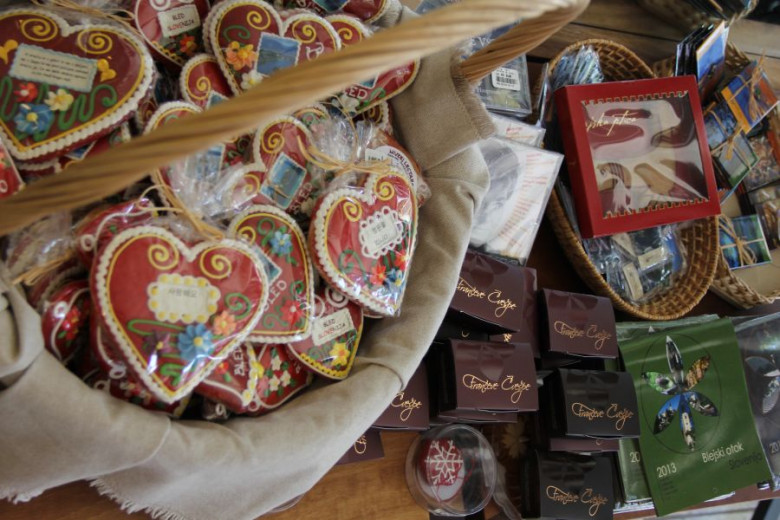
The making of lect hearts, a type of honey bread with ornaments, is among the oldest crafts in Slovenia, but only a handful of lect heart workshops have survived. Photo: Government Communication Office archives
-
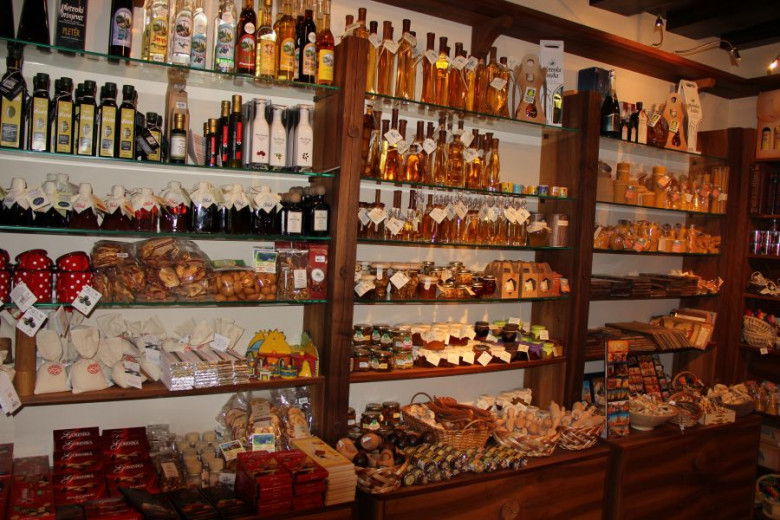
Potičnica is a place where you can find various types of the traditional Slovenian "potica" with various fillings and all other sorts of souvenirs. Photo: Government Communication Office archives.
The reflection takes shape
Then one catches sight of the shining mirror. And what does one see? The fractions of the image have names; only the sky remains just that. The mountains with Triglav are the core of the Julian Alps; the colourful part is the foothills and forest of Pokljuka, and the mirror is Lake Bled. The image in the eye of the traveller is a vision of paradise.
Date: 27. May 2020
Time to read: 5 min

